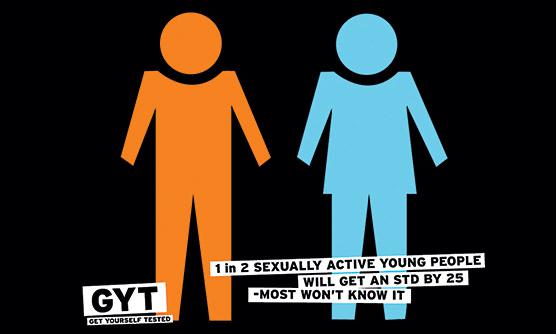Common Sexually Transmitted Infections

People are far more worried about contracting HIV than they are about getting any other sexually transmitted infection (STI).
Maybe that’s because this disease is better known than any other STI, but it’s also because of the seriousness of HIV and the implications of contracting it. This doesn’t mean that the rest of the STIs can be safely ignored — the others are not only much more common, they’re far more infective too.
The thought of getting an STI tends to freak people out. From the moment it strikes them that whatever risky behaviour they’ve enjoyed may have real-world consequences, they tend to seek a diagnosis and solution immediately. That panic is usually out of proportion to the severity of whatever they may have picked up, and it’s often brought on by a mixture of stigma and a lack of knowledge — but when you know the facts, that’s part of the solution.
Some common conditions are bacterial urethritis and vulvovaginitis — both of which are the unpleasant result of an infection by either one or a cocktail of bacteria — usually chlamydia and/or gonorrhea. These bacterial infections are more symptomatic in men than in women; there will be discomfort, pain, or an unusual discharge that alerts the infected person that they have an STI. Gonorrhea tends to be more severe — more pain, more discharge, and eventually a higher risk of systemic symptoms like fever, dissemination and rash — but it’s very difficult to tell just by looking at the symptoms alone what the infection is. In both sexes, it can also be entirely asymptomatic, and you can be a carrier without knowing at all.
Transmission
The problem with being infected without having any symptoms is that you can pass a disease on to someone else — and even if you are just keeping it to yourself, the effects of carrying a long-term bacterial STI that you don’t even know you have can be very serious. In short, if you’ve had any kind of risky contact at all, it’s not a bad idea to get tested for these infections so that you can be sure you’re clear.
The stakes are even higher now that another bacterial STI is making a big comeback — syphilis. This disease had its heyday in the era before there were antibiotics. It’s super-easy to treat, as the bacteria isn’t particularly resistant to any antibiotic (even penicillin will do the trick) but because it has been off the scene for so long, neither patients nor doctors are looking for the signs anymore, and so it can often be missed.
While it’s really the bacterial infections I see most often, they’re still not the most common STIs around. That honour goes to HPV genital warts, with the majority of cases being entirely invisible. I would say that roughly only 2% of people who contract the infection will get the warts, so the vast majority of people don’t know they have it at all. This is why it’s spreading so much — it can infect up to 70% of sexually active adults.
The good news is that genital warts resolve themselves spontaneously — at least the warts do, if not the infection itself. They’re also quite different from the female genital tract lesions that can eventually become cancerous, which are caused by a different strain of the HPV virus. They’re contracted the same way and they are related, but they’re not the same thing at all.
Easy Treatment
If your diagnosis is positive for an STI, the treatment is usually straightforward. HIV is treatable, even though it’s still not curable. This is a far better prognosis than it was 15 years ago when HIV was considered a death sentence — with medication, you can now expect to live an (almost) normal life, and it seems likely that a cure will be developed within your lifetime. All the bacterial diseases can be resolved with antibiotics, including syphilis, as long as it’s diagnosed early enough. Chlamydia in particular is important to treat, because you can still infect other people and it may cause complications, such as pelvic inflammatory disease or sterility — at least in women.
With HPV genital warts, there’s no reason to treat the infection, but you can still burn off the warts with liquid nitrogen. I try to reassure people with warts by welcoming them to the club — “you’re among the 70% of people who carry the virus!” At the same time, I advise them to do a screening for everything else. If you’re in my clinic, you’ve proved you’re not a monk or a virgin — at least once in your life, you’ve done the deed, and here we are. Warts may be the least of your problems.
It’s quite possibly more dangerous to cross the street in Saigon than it is to engage in sexual relations. However, the simple fact that you’ve been exposed (whether you have symptoms or not) should prompt some kind of screening.
 We use cookies on this website to enhance your user experience
We use cookies on this website to enhance your user experience